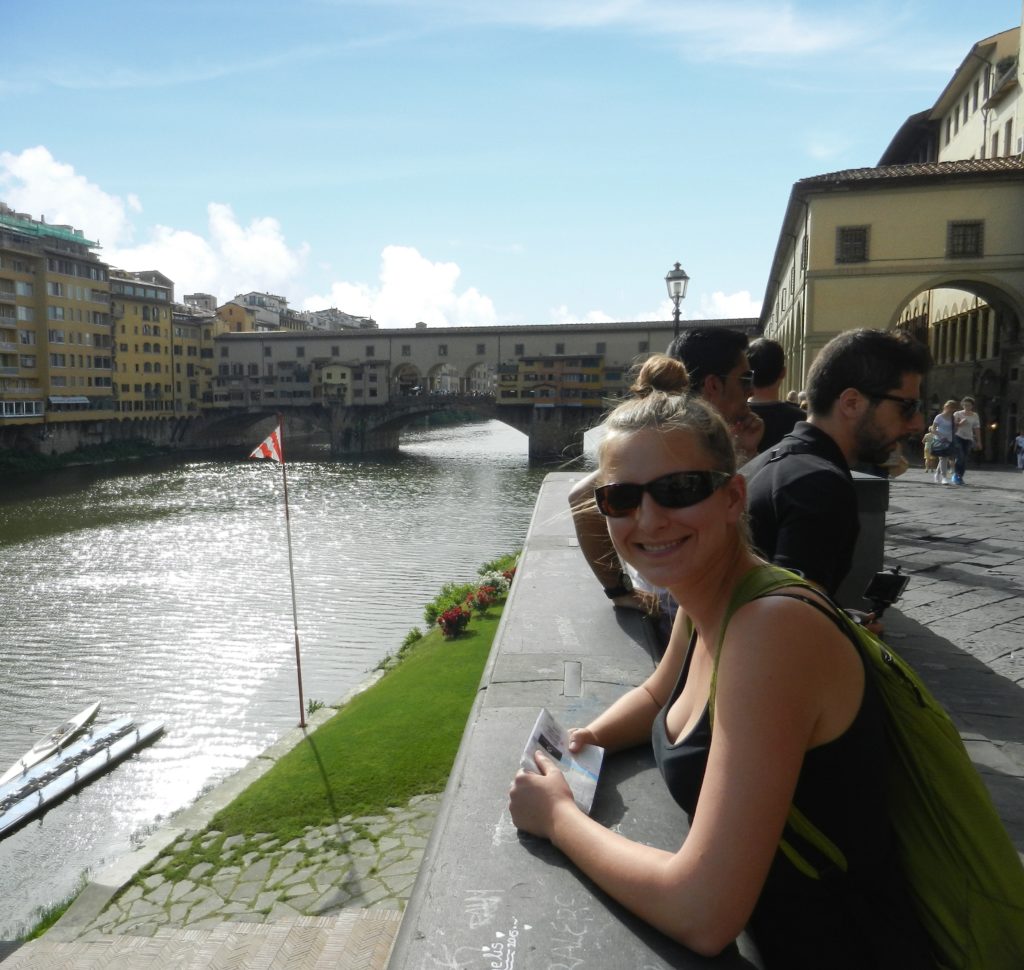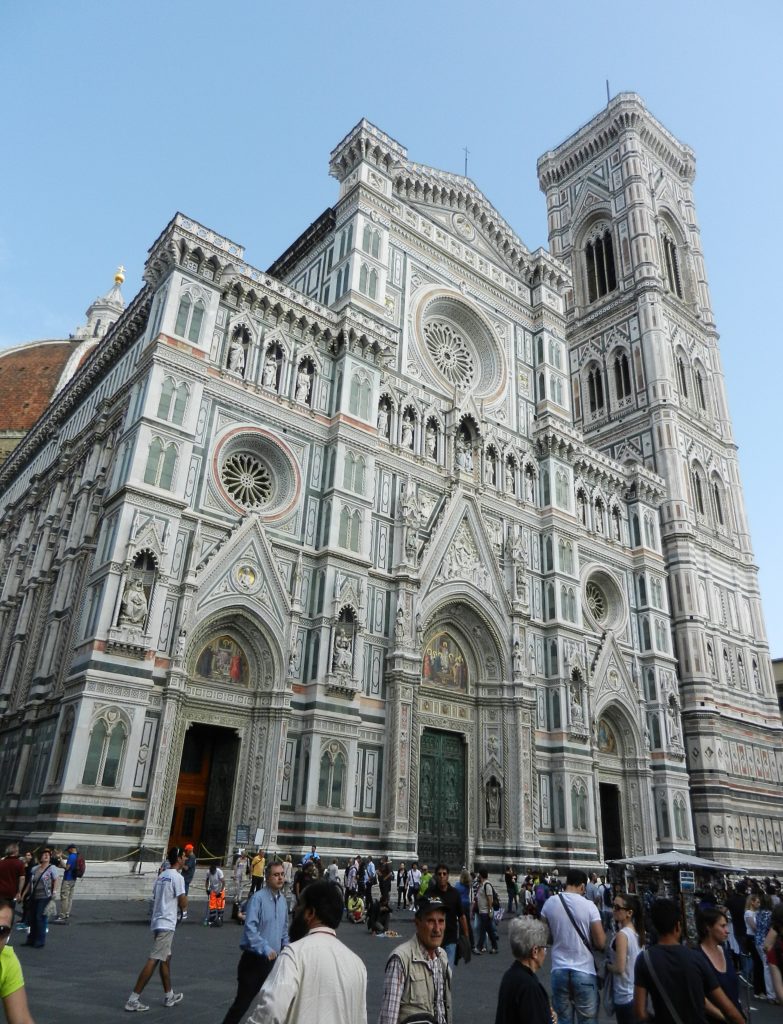
Between the beautiful architecture and delicious wines (just outside the city you will find the Chianti wine region) tourism has become the major driver of the Florentine economy. Florence, or Firenze in Italian, has been at the front of the pack economically for centuries; in fact in the Middle Ages it was the centre for Medieval finance and trade. All that wealth was put to artistic use and the city is considered to be la culla del Rinascimento, “the cradle of the Italian Renaissance” for a very good reason.
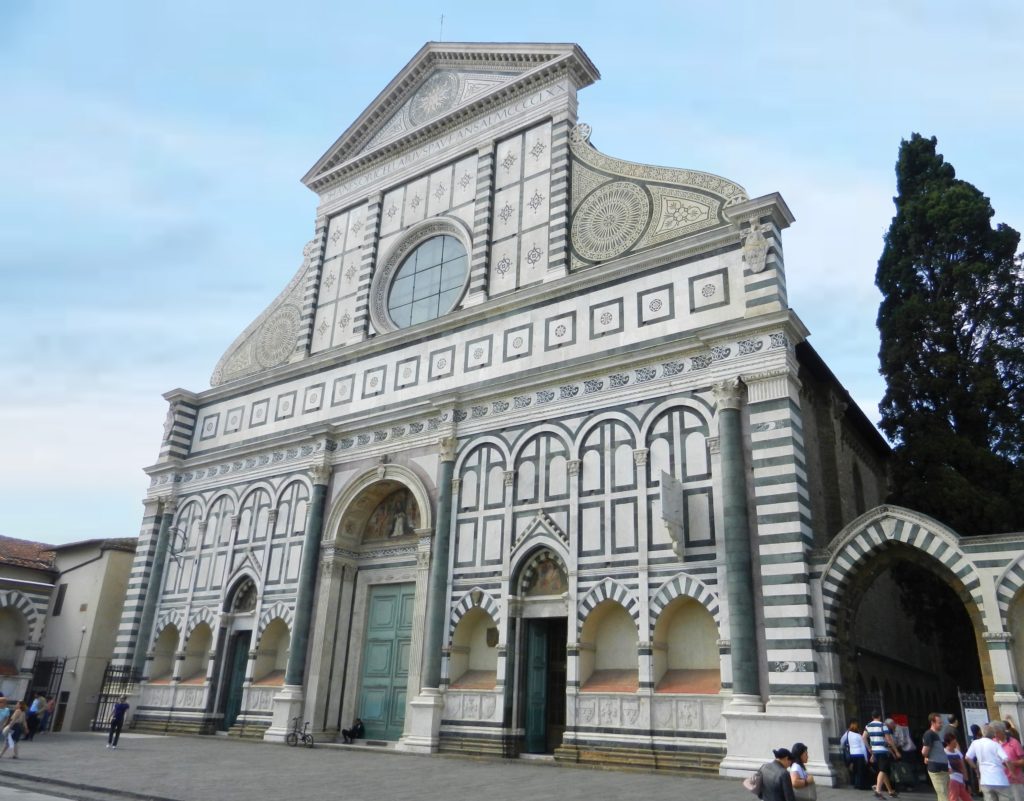
You can easily spend numerous trips slowly getting acquainted with the charms of Florence. I had visited Florence a good ten years previously as a teenager and the markets, squares, and bridges sparkled in my memory. I couldn’t wait to drag Nathanael around to the Duomo, Ponte Vecchio, and Corridoio Vasariano! We threw up our tent at a HI hostel and set off to explore this treasure of Tuscany.
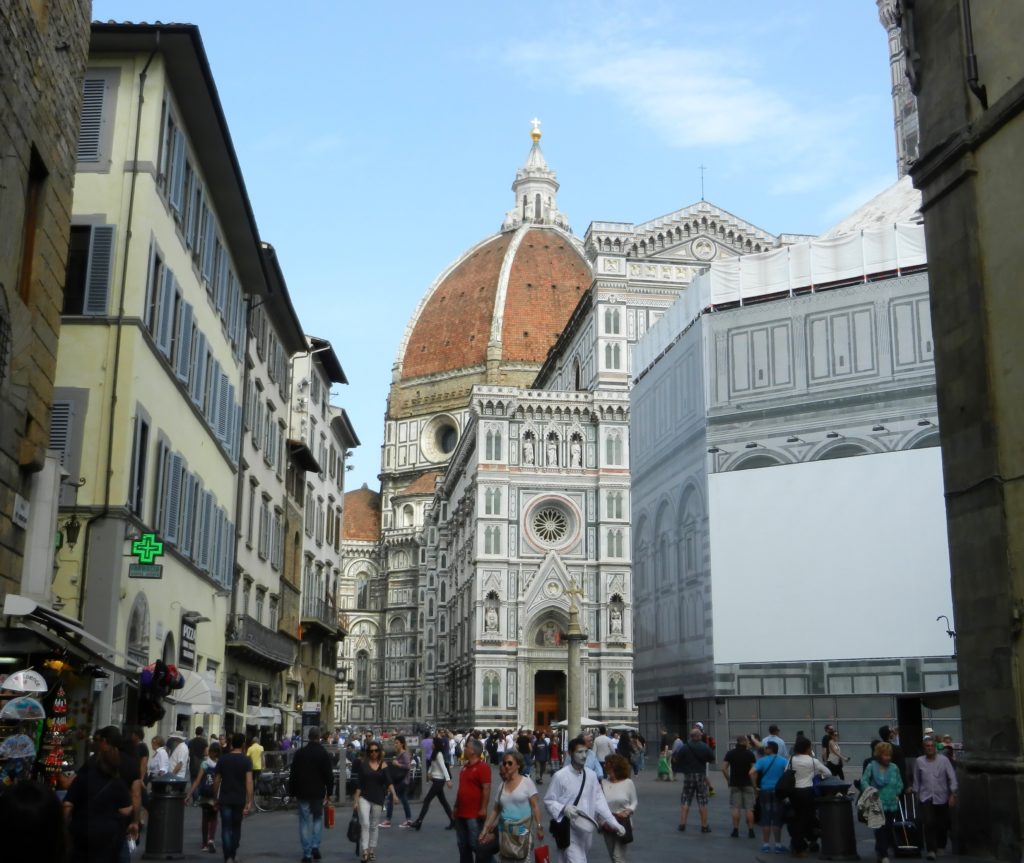
Taking our time we slowly wound our way through the streets, checking out all the high fashion that Florence prides itself on, making our way towards the Piazza del Duomo. Florence’s flair for fashion dates way back when at the start of the 14th century Florence found itself at the centre of textile production for all of Europe. Today, well-known designers such as Salvatore Ferragamo, Emilio Pucci, and Gucci have their headquarters in Florence, and many more have major offices and stores in and around the city.
The square was humming with activity in the afternoon sun. Light gleamed off of the iconic pink, white, and green marble facade of the Duomo and its campanile (bell tower). The complex of Santa Maria del Fiore, as the collection is known, is comprised of the Santa Maria del Fiore (the “Duomo”, third largest church in the world!) with the crypt of Santa Reparata beneath, the Baptistry of San Giovanni in front, and Giotto’s Bell Tower beside. The baptistry was under renovation when we visited unfortunately, making it difficult to take nice pictures, but the complex is incredible to walk around. The sheer size and grandeur of the Gothic-style Duomo stunned me, and the close quarters of the surrounding buildings make it nearly impossible to take everything in at once. The Opera Duomo Museum is tucked behind the Duomo itself and features beautiful works of art by the likes of Donatello, Michelangelo, and others that were originally displayed in the complex buildings. Visiting the Duomo is free, and while much of its decoration has been relocated to the Grande Museo del Duomo it’s still a lovely cathedral. Tours are available to take you up to the balconies and you can opt to climb the bell tower and visit the baptistry too (purchase the whole package here).
The Piazza della Signoria is probably one of the most iconic images of Florence, second only perhaps to the Duomo. The square has been the centre of political life in Florence since the 14th century and has seen some of the major events of the city’s long history, including the return of the Medici (a prominent banking family) in 1530 after a period of exile and the Bonfire of the Vanities in 1497, a public burning of cosmetics, books, and other objects deemed “sinful” at the time. The Palazzo Vecchio is a palace-fortress overlooking the square, a position that has been a prominent cultural fixture since Roman times when an ancient theatre from the 1st century occupied the space.
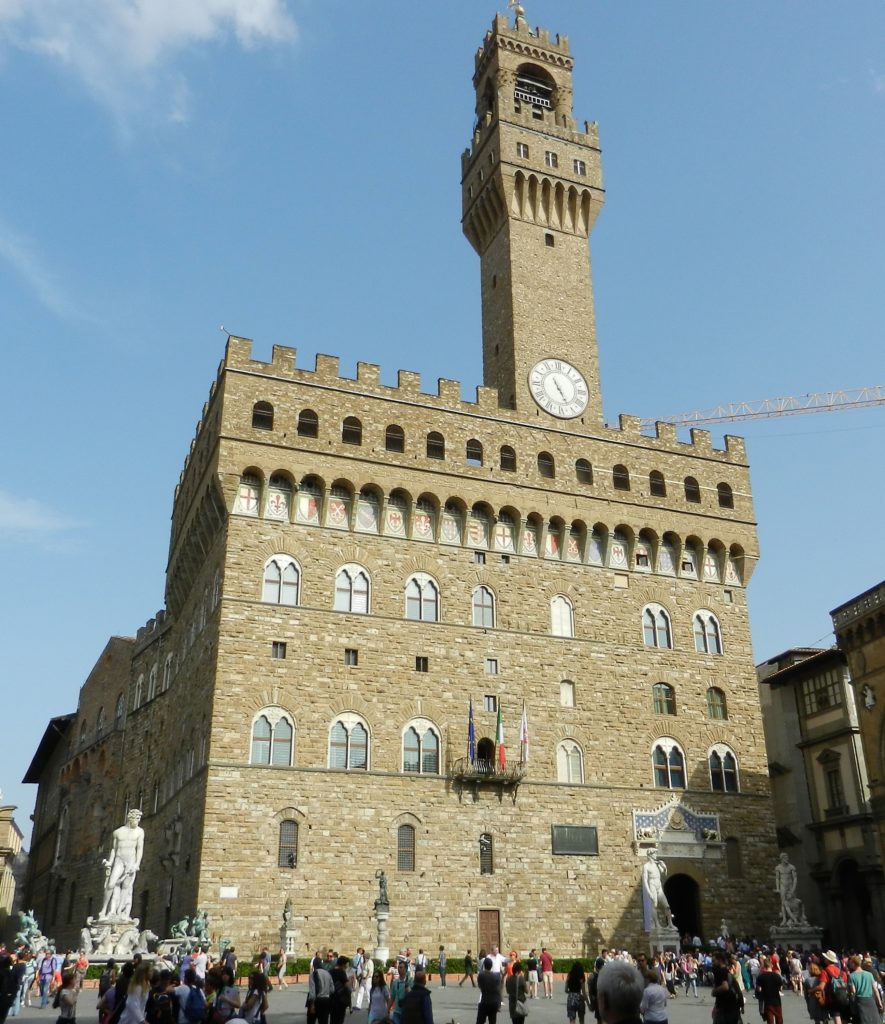
Sculptural and statue work adorns the square, and a copy of Michelangelo’s David (the original is in the Accademia Gallery) watches over the entrance to the Palazzo Vecchio. After seeing the fortress, the Loggia dei Lanzi is the perfect spot for a rest and to take in the scene. It’s an open-air sculpture gallery designed by Orcagna in 1376, and it’s free! You can find a variety of masterpieces in this open-air gallery, including the gory statue of Perseo by Benvenuto Cellini, a bronze sculpture of the Greek hero Perseus holding up Medusa’s severed head commissioned by Cosimo I de’ Medici in the 16th century. One of my favourites is the Fontana di Nettuno, the Fountain of Neptune. Also commissioned by Cosimo I de’ Medici, it was sculpted by Bartolomeo Ammannati and apparently not initially appreciated by the Florentines who dubbed it “the white giant”. I like it though!
A little off the beaten track, you can find the home of one of Florence’s most famous residents, an individual whose works have continued to inspire art, literature, and cinema to this day. Florence was home to Dante Alighieri, author of the Divine Comedy, an epic poem that continues to influence culture today and forever changed how we view heaven and hell. We had previously visited the cave that supposedly inspired his famous work in Slovenia, and so Nathanael was overjoyed that we could visit his house! While the house itself has changed significantly over centuries of expanding, remodelling, and renovating, today you can visit the Dante’s House Museum to learn a little about his life and works.
Our last stop, perfectly timed with the setting sun, was the Ponte Vecchio (“Old Bridge”). This was the only bridge across the Arno in Florence until 1218, and was the only bridge in Florence that fleeing Germans did not destroy in World War II. While shopping was not the original purpose of the bridge, the covered shops have been around from the 13th century and give the Ponte Vecchio its’ unique, romantic look. Originally the shops consisted mostly of butchers, tanners, fishmongers, and the like, but this was deemed too smelly (seriously) and in 1593 Ferdinand I declared that only goldsmiths and jewellers could house their shops on the bridge. Today it remains as beautiful a spot as ever to do a little shopping or to just enjoy a stroll over the river.
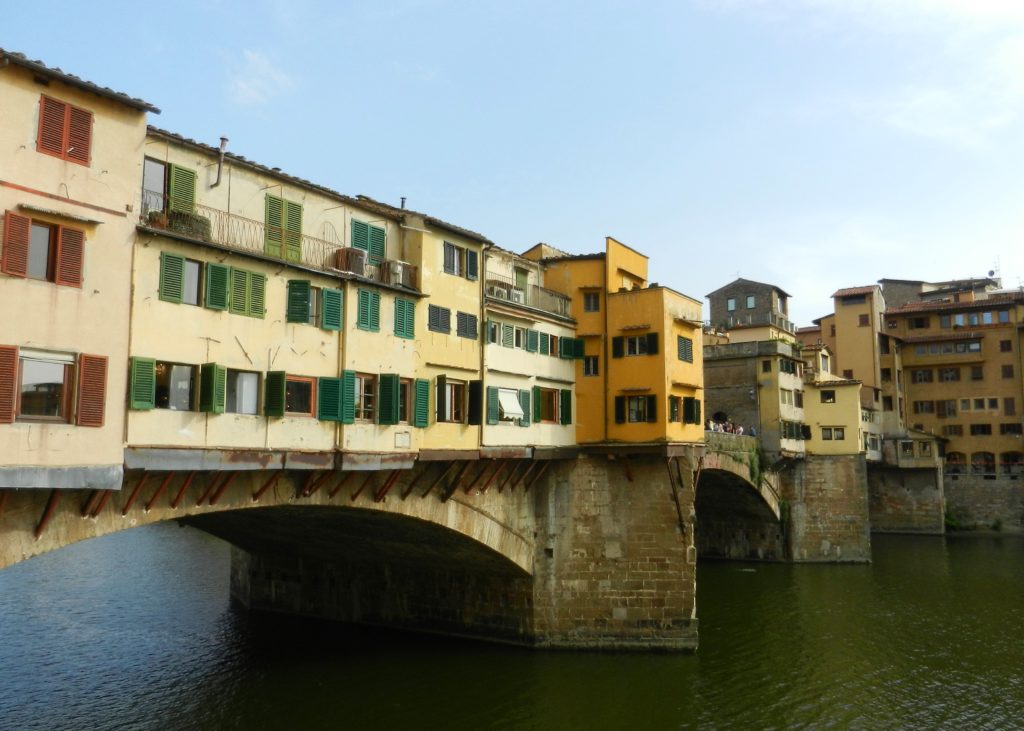
It felt bittersweet to see the sun set over the Ponte Vecchio, knowing that tomorrow we would be leaving Florence behind. Who knows, maybe we’ll find our way back to Florence one day. In the mean time, we were off to one of the most well-known cities in the world, Rome!
